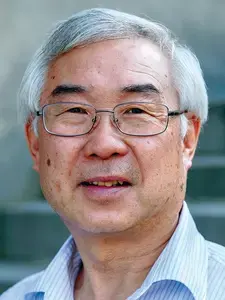
Biography
De-Ping Yang's research has been in the experimental investigation of solid state materials that contain nuclear magnetic moments. The main experimental methods are nuclear magnetic resonance (NMR), recoil-less gamma ray absorption spectroscopy (Mössbauer spectroscopy), x-ray diffraction, bulk magnetization measurements (hysteresis, Meissner effect), thermal measurements (heat capacity, calorimetry) and computer simulation/modeling. The investigated materials include amorphous alloys, high TC superconductors, rare-earth permanent magnets, membranes containing drug molecules and Fe-based nanocrystalline alloys. Research results have been reported at international conferences and regional seminars and published in scientific journals, research monographs and a book, Mössbauer Effect in Lattice Dynamics by Wiley.
Yang's research laboratory at the College has a Mössbauer spectrometer, in which a gamma ray source, cobalt-57 in a sealed rhodium matrix, is mechanically modulated by an ultra-linear constant-acceleration driving motor with a typical maximum velocity of 12 mm/s. A laser in a Michelson interferometer is used to monitor the velocity profile. Sample temperature may be continuously regulated down to cryogenic temperatures of about 15 K or raised to high temperatures up to 700 K. Proportional detection of the transmitted gamma rays is synchronized with the source motion, and the data is registered in a multi-channel analyzer in a computer. Mössbauer spectra are recorded and analyzed to provide information on the atomic and electronic structures of the material. Techniques such as high vacuum, high pressure helium gas, cryogenic temperature, high voltage and digital electronics are used, but each component of the apparatus is made accessible and suitable for engaging undergraduate students. So far, there have been five students who have worked in the laboratory during two summer periods and three regular semesters. The Mössbauer spectrometer has also been used for teaching in the Experimental Solid State Physics course.
Selected Publications
- IEEE Transactions on Magnetics, 45, 3901- 3904 (2009) Review Article in Encyclopedia of Applied Spectroscopy (ISBN 978-3-527-40773-6) pp. 51-85. (2009).
- Biochimica et Biophysica Acta, 1808, 2095-2101 (2011).
- The AAPS Journal, 15, 477-482 (2013).
- Chemical Biology and Drug Design, 85, 534-540 (2015).
- Biochimica et Biophysica Acta, 1858, 344-353 (2016).